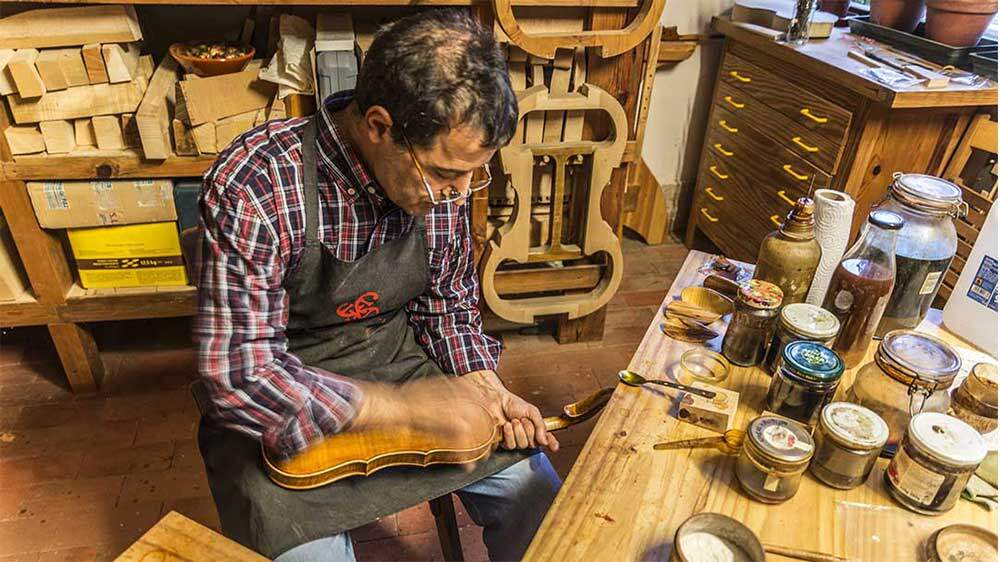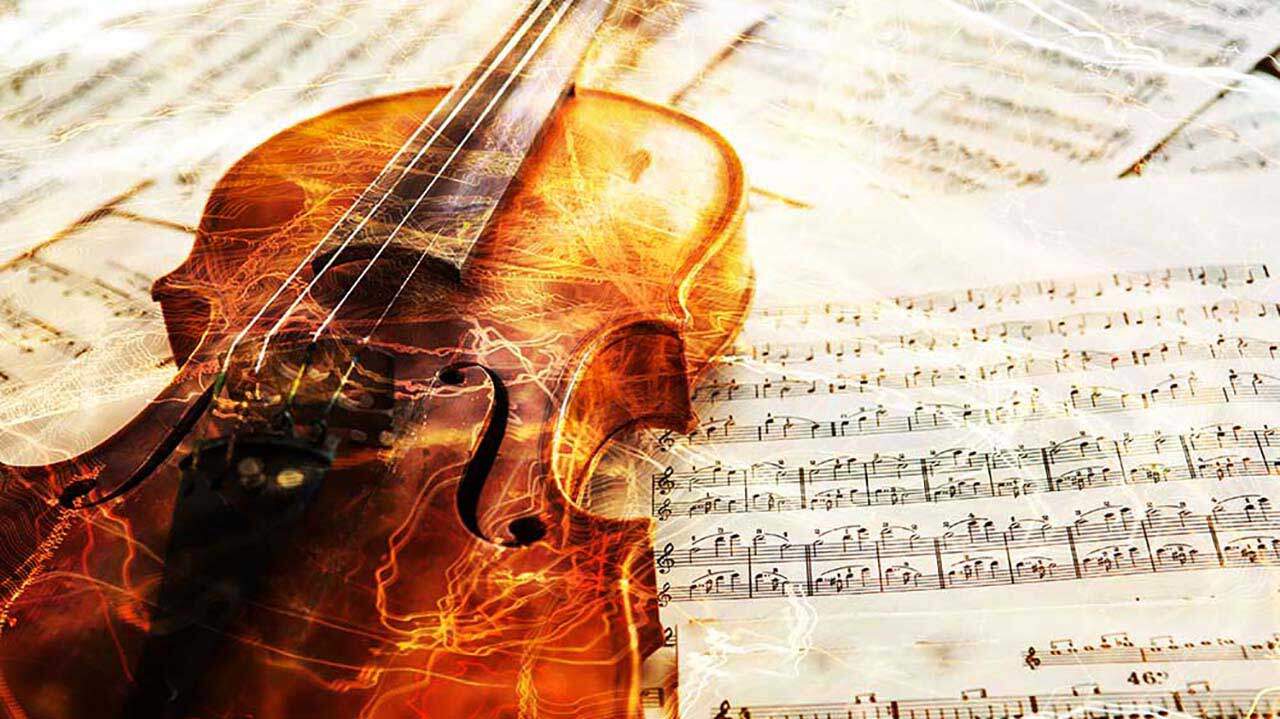While it’s true that most people believe that the violin family was created by Andrea Amati, an Italian luthier, around 1555, the truth is that stringed instruments played with a bow were around long before that time.
Therefore, when you’re thinking about the violin and its history, it’s best if you think about it as an instrument that has evolved over time, instead of a perfect product that was invented.
![]()
Stringed instruments in the Middle Ages
Looking back in history, we find records of stringed instruments that existed in Europe during the Middle Ages. However, it is believed that the very first stringed instruments played with a bow originated in Central Asia with instruments like the morin khuur in Mongolia.
![]()

![]()
These instruments originating in Central Asia then traveled via the trade routes to the rest of the world. Once European instrument craftsmen learned of these instruments and how they were made, they designed their own take on them with traditional wood crafting techniques from Europe.
![]()
Evolution of the violin

In 16th century Europe, there was a variety of stringed instruments that were played with a bow that began to evolve. This is where the contention regarding specific aspects of violin family history arose. There are some that believe Andrea Amati invented the violin, but there are others who do not believe he created the first violin, but that it was created earlier in the 16th century in Brescia.
One thing that is certain is that there were many different stringed instruments during this time and the modern violin family evolved from a stringed instrument that was played with a bow and was extremely popular during this time.
The oldest surviving violin was made by Andrea Amati in 1564 and is named the Charles IX. This supports the idea that Andrea Amati did, indeed, create the very first standard modern violin; at the very least, it can be agreed that it does offer some physical evidence to justify/prove this thought.
![]()
Popularity of the violin
Due to the facts that the violin was small, versatile, and had a very sweet, melodic tone, it became quite popular in Europe among all classes of people.
Eventually, the family of instruments known as the violins became much more admired than the viols, which are close rivals, because the violin family of instruments had much better sound projection, which was better for larger concert venues.
In the late 18th and into the early 19th centuries, the violin went through some pretty serious technical changes. The length of the fingerboard was increased and it was set at an angle so that it could better support the increase in the tension of the strings.
It was discovered that by increasing the tension of the strings and making the changes in the fingerboard, the violin had an increase in both sound projection and range.
![]()

![]()
Those who had older violins took them to luthiers to adapt them. In some cases, these adaptations ended up seriously impairing the original piece. The new violins were being made using these new specifications. It’s not exactly clear when these changes were made and who exactly made them.
As the violin continued to grow in popularity, more instruments were being produced and it began to be used in a variety of different music styles.
Individuals who played the violin began to develop new techniques to complement the new genres of music, and in some cases, small modifications were being made to the instrument itself to meet the needs of the genre of music that was being played.
The violin became a key component in a variety of different music styles, being used to play Hungarian music, Celtic music, gypsy music, and Irish music. Later, as new music genres began to emerge, it was used to play blues, jazz, bluegrass, and country/western.
Antonio Stradivari, a “Golden Age” luthier, is the most famous of the violin makers; today, his violins sell for millions of dollars.
![]()

![]()
Today’s violin
These days, the violin is one of the most popular instruments across the world. The older violins are more sought after than the mass-produced factory violins by advanced and intermediate players of this instrument due to the superior resonance, craftsmanship, and because it is believed that the tone/timbre of the instrument matures over its lifetime.
The violins that are being produced today can emit sound electronically through amplifiers and microphones, which means that the need for a sound box has been eliminated.
![]()

![]()
Musicians can use amplifiers to distort the fully electric sound produced by today’s violins to create a variety of tonal qualities, which means the capability of the instrument is even more diversified.
![]()
Violin In The Future
As you can see, over time, the violin has evolved into an extremely versatile instrument and these days, a violinist now has a variety of career options and genres that he or she can explore.
While it’s true that violins are famous for their origins, there are also many amazing violin players flourishing across all genres including bluegrass, country, and Celtic music. This is why there are so many people who are interested in, and excited to be learning about this amazing instrument.


Leave a Reply